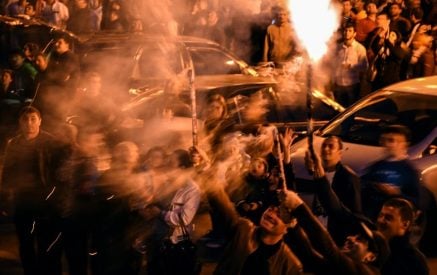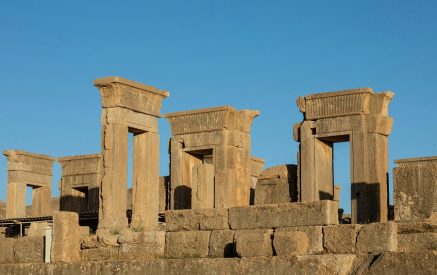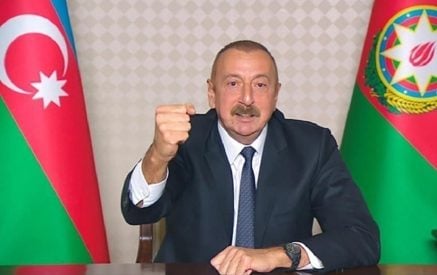The Armenian Weekly. To put this week’s topic in context, we need to go back a few years and a few generations. All Armenians are aware that the genocide of 1915-23 changed our world forever. For 1.5 million souls, it was the end of their earthly lives. Each survivor who was fortunate to escape death found themselves in a battle for the quality of their life. They settled wherever they found refuge and an opportunity to live in peace. In many cases, their fate was influenced by geography. There were some areas in Western Armenia that experienced higher fatality rates due to the fanaticism of the murderers or their complete isolation. Unfortunately there were few survivors from Trebizond in the north or the Bitlis/Moush area further south. Even areas of heroic resistance such as Van suffered heavily, but many survivors were able to escape or move eastward behind czarist Russian lines. Armenians of Cilicia would suffer three rounds of atrocities: the 1909 Adana massacres, the massacres and deportations of 1915-17 and the incredibly tragic massacres after returning in 1918-19 at the hands of the Kemalists. Eastern Armenians also suffered during the 1918-22 period with atrocities committed by the Tartar/Azeri and Turkish aggression.
Life and death experiences were equally shared by all Armenians as the formation of the diaspora began in places like Aleppo, Cairo, Beirut, Marseilles, Boston, Fresno and New York. Personal recovery led to communal order. We were all the same, some from Sepastia, some from Kharpet, some Protestant, some Apostolic…but all victims and survivors. A single focused purpose existed in the 1920s and 30s—to survive and to build Armenian communities in their new homes. They were determined to give their children a better life that included their faith and heritage. Times of tragedy and adversity bring out what we have in common.
Dramatic changes have occurred in the worldwide diaspora in the last decades. For the first 50 years after the genocide, the diaspora strongholds were in North America, Europe and the Middle East. There were also substantial diaspora communities in South America, Australia and parts of the Soviet Union. In the United States, after World War II, the west coast grew incredibly with early migration east to west. Organizational strength and infrastructure expanded as the community was able to assist other diaspora areas. In the Middle East, the story initially was one of growth and remarkable vibrancy. The diaspora essentially began in Aleppo as the first survivors formed neighborhoods with little resources but with an incredible will to recover. Beirut became an important center as that region was added to the French mandate making it attractive for Christians. In 1930, the iconic Great House of Cilicia relocated to Antelias, a suburb of Beirut. This added significant prestige and organization to the Lebanese Armenian community. Damascus, Cairo, Baghdad, Greece, Jerusalem, Cyprus and Iran were also communities that added to the profound depth of the Middle East diaspora. It is interesting to note that although Russia has always had a substantial Armenian Diaspora (which has grown significantly in the last 30 years), its influence as a community was limited to Armenia in the first 50 years due to its constrained interaction with the world outside the Soviet Union.
Recently in the last 50 years, the communities of Europe and the United States have remained influential and strong. Europe has been led by the renowned French Armenian community, and the emergence of the European Union (EU) has created a new political dynamic. In the United States, the major change has been the emergence of the Los Angeles community as the powerful political, economic and educational presence in the diaspora. Political advocacy has emerged with the visible and professional work of the Armenian Assembly and the Armenian National Committee (ANC).
Read also
Realistically, the fate of our diaspora communities has always been heavily dependent on the political stability of the host nation. Nowhere is this more evident than in the Middle East where the absence of democracy and presence of conflict has decimated many of our “flagship” communities. This has led to a weaker infrastructure, enabling migration and creating uncertain futures. Nationalizing industry and ultranationalist sentiments in Egypt in the late 50s and early 60s devastated the communities of Cairo and Alexandria with many of the immigrants resettling in Canada. Beirut’s Armenian community was devastated by the Civil War of the 70s and early 80s leaving it half the size of its peak.
One of the sad ironies of the Middle East communities is that the Arab nations opened their doors to welcome Armenians after the Genocide, yet continued instability has forced migration and weakened the communities over time. Interesting new communities have emerged in Gulf nations such as Qatar and Kuwait. The well-established Armenian community of Iran is quite unique. Given the integrated borders of Iran and Armenia over the centuries, some of the Armenians in Iran could be considered indigenous Armenians. Certainly a large number of Armenians left before and during the strife in 1979 with the Islamic Revolution. It is a remarkable accomplishment of respect and adaptability that the Armenians were able to survive the Shah to Ayatollah transition. The Armenians are viewed as an educated and entrepreneurial community to host nations. This is no small task considering the prestigious relationship the Armenians enjoyed under the Shah.
Two relative anomalies are the communities of Russia and Turkey. The former is now considered the largest, due in large part to economic migration from Armenia. While the community is large, it is plagued by church corruption (the primate is the Vehapar’s brother). Its political influence is limited due to the lack of civil liberties in Russia, but ties to Armenia are significant. The community in Turkey is a bit of a head scratcher. Are they indigenous or diaspora? The vast majority of the community resides in Istanbul, but the country is home to thousands of “hidden Armenians,” from which the leadership remains aloof. Their influence on Armenian issues is neutralized because of the fear of Turkish oppression. Added to these changing dynamics is the destruction of the once significant community in Baku and elsewhere in Azerbaijan, now victims of massacres and deportation. More recently, we have seen the impact of war and anti-Christian strife in Baghdad, Aleppo and other communities in those Arab nations. The impact in Aleppo has taken a community once near 80,000 to about one-third its size.
Another example of resiliency and credibility is the long-term support the Armenians have enjoyed from the Assad family in Syria. The loss of sizable pluralities (perhaps majorities) over the years from these communities has impacted their cultural, education and political capabilities. The Armenians are hearty and a core will remain, but what will happen to institutions such as the Holy See of Cilicia if the communities it lives within continue to erode? Should migration from unstable areas to Armenia be encouraged? It will certainly strengthen Armenia as the Lebanese and Syrian Armenians are smart, energetic and capable of creating an “instant economy,” but it would weaken the iconic Aleppo community. These are tough choices when you live in an unstable diaspora. What is going on in Syria and Lebanon is particularly tragic given their historical position in the diaspora the last 100 years. The question remains for the Middle East communities: can they survive as vibrant communities in the long term? If not, what does that mean for the remaining stronghold in the diaspora? How do diminished Middle East communities impact the use of the Western Armenian dialect? How will the political shifts in Lebanon impact the Holy See in Antelias?
One aspect of this dilemma is clear. The North American (US and Canada) and the EU-based communities will have to carry a substantial load both politically and financially. Political freedom and government stability go a long way in ensuring the effectiveness of the diaspora community. There will continue to be viable communities in all corners of the earth, but many have been weakened as a result of migration and the political climate in the host nation. Of course on the other hand that very migration has strengthened other diaspora communities. For example, the exodus from the Middle East, Armenia and Baku has replenished and advanced the community ties here in the US.
Let’s consider our role as the American diaspora. It carries with it a heavy responsibility. Today we enjoy incredible wealth and education. It wasn’t always that way. As I referenced earlier, the dispersion of Genocide survivors was quite random. Whatever options that were available were taken. By the grace of God, my grandparents came to America. But it could have been Marseilles, Beirut or death. At our very core, Armenians in America are no different than those whose grandparents huddled in poverty in the First Republic, escaped to the Balkans or populated to modest beginnings in the Middle East. Once you truly internalize how fragile life can be, we begin to realize that our wealth and education can be put to a greater use than simply for ourselves. From contributing to schools and infrastructure in the Middle East and supporting Syria and Armenia, the generosity and philanthropy of the American Armenian community has been epic. But we can do more. We can follow the lead of many of our youth and meet the people of Armenia in our philanthropy. The first time you go to Armenia two things happen. You are a tourist, and you feel the love. After that, you should never be a tourist again, and you can instead use the love to build relationships. This is how we bond the diaspora and Armenia. It takes money and resources, but it requires each of us to ask the question: what am I doing for Armenia with my good fortune? It is so inspiring to see so many young people who understand the need to give of themselves. As parents, we are certainly enabling this phenomenon, but we can also directly participate. We all have a role to play. Give further meaning to your life. Think about the scattering of our people from 1915 to 1923. They shared a common desire to survive. It mattered little where they were. We are their legacy. Forget the artificial labels. We are one. Our good fortune is a blessing truly when it is shared.























































